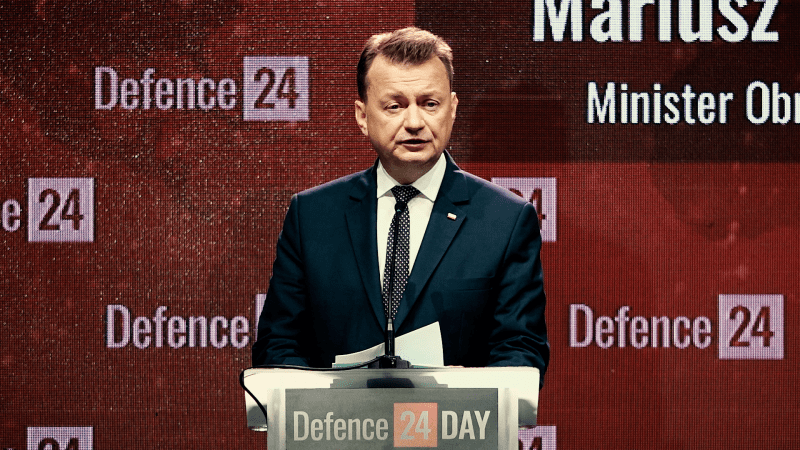Defence Policy
Defence24 DAY: Phase II of the Wisła Air and Missile Defence Programme Begins

The Polish Ministry of Defence has sent a Letter of Request to the US DoD, regarding the second stage of the Wisła air defence programme, Mariusz Błaszczak, head of the Polish MoD announced during the Defence24 DAY conference. The above refers to six Patriot system batteries integrated with the IBCS air defence management module.
As announced by the head of the MoD, during the Defence24 DAY conference, the Polish MoD decided to send out a LOR, regarding the second phase of the Wisła programme. The request covers the procurement of 6 Patriot batteries (three squadrons), integrated with the IBCS air defence management system, 360-degree coverage radars, launchers, and a stockpile of missiles (PAC-3 MSE). The potential implementation of that request would make it possible to equip 8 Patriot/IBCS batteries in total, in the Polish Armed Forces. These assets would serve as a foundation for the IADS that, alongside the Wisła system, also includes the Narew SHORAD solution, as well as the domestically-developed VSHORAD systems, including Piorun, Poprad, and Pilica.
The second phase of the Wisła programme would involve the procurement of batteries featuring the LTAMDS radars. The system features one primary antenna, and two side antennas, all with GaN AESA arrays, providing a 360-degrees radar coverage. LTAMDS radars have been designed for detecting challenging threats, such as ballistic missiles for instance. The aforesaid radar is currently undergoing testing. The system is being manufactured by Raytheon, and the first example has recently been supplied to the US Army. Furthermore, Polish early warning radars shall be integrated within the IBCS network, within the framework of industrial cooperation. The above refers to the PIT-Radwar's PET-PCL and P-18PL radars, developed within the framework of projects supervised by the National Centre for Research and Development.
During the first phase of the Wisła programme, two Patriot batteries were procured, along with other elements of the whole system, for USD 4.75 bn. The first equipment deliveries are expected to happen this year. Each of the Polish batteries would include 2 multifunctional fire control radars, along with 6-8 launchers, C2 elements, and auxiliary equipment, including power generators or vehicles.
The IBCS configuration for Phase II of the Wisła programme is to be aligned with that for the Narew system - the latter solution is going to be integrated with IBCS as well. This means that the so-called payload approach would be adopted, with a system configuration tailored to the Polish requirements, including domestically-developed elements - such as the communications suite. Of course, the system would still retain complete interoperability. In the first phase of the Wisła programme, the IBCS configuration was identical to the one acquired by the US Army.
The finalization of the Wisła programme would equip the Polish Armed Forces with the capability to act against ballistic missiles. Wisła would also be capable of neutralizing fixed- and rotary-wing aircraft, cruise missiles, or even UAVs. "Every sensor, best shooter" would be the primary operational principle, meaning that data required to engage air threats would be delivered from any sensor on the IBCS network. To neutralize the threat, the most effort-effective effector at the time would be used. The IBCS is going to be integrated with the Narew system as well. Narew would be built by the PGZ Group, and it would be based around the MBDA CAMM/CAMM-ER missiles. During the Defence24 DAY it was announced that a new missile would be developed on basis on CAMM/CAMM-ER, in cooperation between the Polish and British Industry.
Integration as such would make it possible to utilize the cheaper CAMM/CAMM-ER missiles and the new missile based on their development to act against targets detected by the Wisła radars and to launch Medium Range assets against threats detected by the SHORAD system sensors. In the long run, IBCS would probably be usable in multi-domain scenarios, building the battlespace picture with the use of data fed by elements from the outside of the IADS. In the US, several tests have been conducted, where the F-35 was the source of firing solution data for the IADS.
